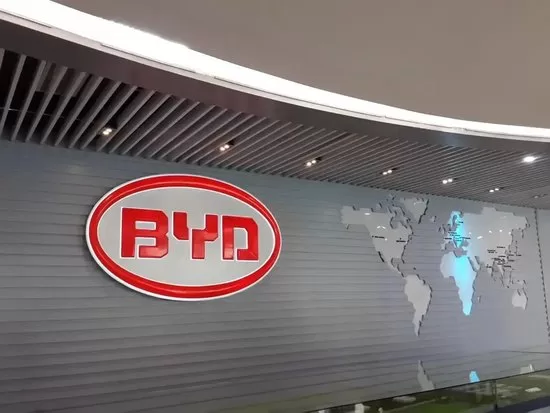The main reason for the large difference in valuation may have nothing to do with fundamentals or vehicle type. Epic competitions have occurred between the “biggest” and “second biggest” in every industry, with Coca-Cola and Pepsi in the beverage industry, UPS and FedEx in the express logistics industry, and Marvel and DC in the entertainment media industry. Now, the two giants in the electric car industry, Tesla and BYD, are also competing fiercely. As the competition in the electric car industry intensifies, investors will have to decide who is the better investment. Analysts led by Bernstein’s analyst Tony Sacconaghi compared Tesla and BYD in a report released on Monday, and the analysts clearly favor BYD. Sacconaghi wrote, “In terms of sales, revenue, and profit, Tesla and BYD are now highly comparable, but BYD’s growth rate is much faster.” In the third quarter, BYD sold about 822,000 passenger cars, including approximately 432,000 pure electric cars and 390,000 plug-in hybrid cars. Tesla sold about 435,000 pure electric cars in the same period. So far this year, BYD’s sales have increased by about 70%, while Tesla’s sales have increased by about 46%. In addition, in the fourth quarter, BYD’s sales of pure electric cars are expected to surpass Tesla’s, which will be the first time Tesla has lost its position as the industry’s “biggest” since promoting battery-powered cars. In terms of profit, Tesla’s operating profit in the third quarter was about $1.8 billion, while BYD’s operating profit in the same period was about $1.7 billion. Bernstein expects Tesla’s revenue to reach $114 billion and operating profit to reach $8.7 billion in 2024, while the expected revenue and operating profit for BYD next year are $112 billion and $7.1 billion, respectively.

Sakonagi therefore posed the question: “Tesla’s market value is $750 billion, while BYD’s market value is $90 billion, why is there such a big difference in valuation?” Based on expected profits in 2024, Tesla’s price-to-earnings ratio is about 60 times, while BYD’s price-to-earnings ratio is about 15 times. Sakonagi said, “We have encountered many difficulties in bridging the valuation gap of over $600 billion between Tesla and BYD.” Bernstein’s rating for Tesla stock is equivalent to “sell,” while the rating for BYD stock is equivalent to “buy.” Bernstein’s target price for Tesla stock is $150, with the recent price around $234. Bernstein’s target price for BYD ADR is around $100, with the recent price around $57. Bernstein clearly favors BYD. Analyst Dan Ives does not cover BYD, but his rating for Tesla stock is “buy,” with a target price of $310. Ives said in an interview with Barron’s, “We believe that in 2023, Tesla will still be the most visible leader in the global electric vehicle market. Just looking at fourth-quarter sales cannot explain the whole situation. The shorts who have missed Tesla’s historic rise over the years will continue to nitpick Musk and his company, still industry ‘leader,’ BYD is clearly the industry ‘second,’ viewpoint.” In other words, do not question Tesla, the company has a long-term growth strategy. By 2024, Tesla and BYD will have similar sales bases. At the same time, Tesla’s sales are lower than BYD’s, but the average selling price is much higher. Tesla is currently developing a small, low-cost electric car, which can help accelerate future sales growth and maintain its leading position. This small car is called Model 2 by investors, and is expected to be launched in 2024 or 2025, the sooner the better. However, the main reason for the large valuation gap between Tesla and BYD may not be related to fundamentals or car models, but may be mainly related to geographical factors. About 25% of Tesla’s sales come from China, while nearly 80% of BYD’s sales come from the Chinese market, which is a factor that investors have to consider when valuing a stock. Most of BYD’s shares are held by Chinese investors, who primarily see BYD as an investment in the automotive industry. Currently, Chinese electric vehicle investors are concerned about intensifying competition, as it will put pressure on prices and profitability. Most of Tesla’s shares are held by American investors, who are also concerned about intensifying competition, but they are also focused on artificial intelligence and how it can help Tesla develop better self-driving cars at a faster pace. Self-driving technology can drive Tesla’s software sales and may eventually make the business model of self-driving taxis a reality, at which point Tesla will have a self-driving fleet similar to Uber, generating taxi-like revenue without paying drivers wages. The views of analysts at Bernstein and Wedbush may ultimately both be correct, with Tesla’s value perhaps always being higher than BYD’s, as Eves believes, and BYD may also do better, as the investor’s views converge, narrowing the valuation gap with Tesla. After all, Coca-Cola has a market value of about $250 billion, while PepsiCo has a market value of about $230 billion, a much smaller valuation gap than that between Tesla and BYD.